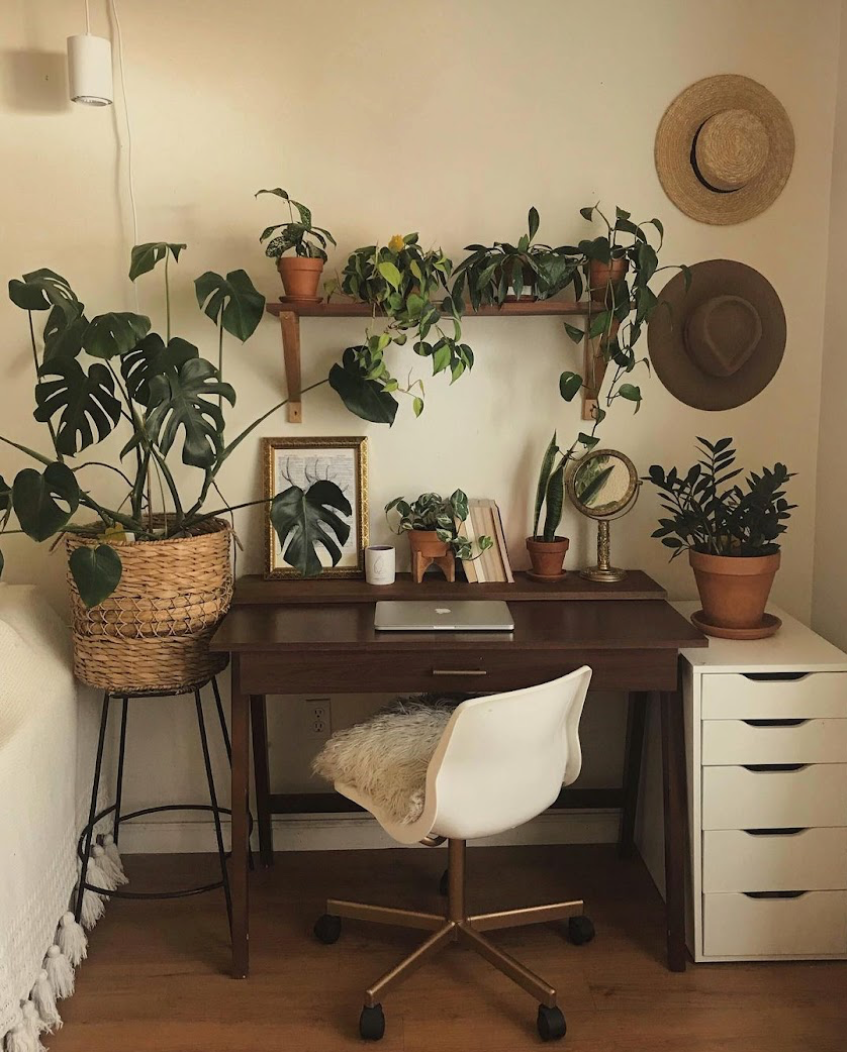
Table of Contents
What Is A Bird Nest Fern?
Bird's Nest Fern is a slow-growing tropical, evergreen, perennial epiphyte native to Hawaii and the Pacific Basin. It lives in rain forests and can be found in soils or on tree branches. It is a member of the Spleenwort fern family, so named because it was once thought that these plants had medicinal properties for the spleen. Bird's Nest Fern can be grown as an indoor houseplant in the continental United States, but it will not survive temperatures below 50 degrees Fahrenheit.
It is distinguished by striking foliage that resembles banana leaves. The fronds are large, simple, stemless, strap-shaped, and bright green, with a dark brown-black mid-rib and wavy margins. Overlapping fronds form a rosette with a nest-like center, spreading upwards and arching gracefully outwards. The common name comes from the fronds rolling back and turning brown as they die, causing a 'birds nest' to form in the plant's crown.
How To Grow A Bird Nest Fern

Bird's Nest Fern for growing indoors
The Bird Nest Fern is a relatively easy plant to care for, but it still requires some attention to keep it thriving. Here are some tips to keep your Bird Nest Fern happy and healthy:
Light Requirements:
The Bird Nest Fern prefers bright, indirect light, but it can also tolerate low light conditions. Direct sunlight can scorch the leaves, so it's best to avoid placing it in direct sunlight. It will do well under an indoor plant light as well.
Water Requirements:
This fern likes to have consistently moist soil, so be sure to water it regularly, but not too much. Overwatering can cause root rot, so it's essential to ensure that the soil has adequate drainage. The plant also appreciates humidity, so consider misting its leaves or placing it on a pebble tray filled with water to create a more humid environment.
Soil Requirements:
The Bird Nest Fern prefers well-draining soil that is rich in organic matter, such as peat moss, vermiculite, and perlite. You can also mix in some orchid bark or charcoal to improve drainage.
Fertilizer Requirements:
It's recommended to fertilize your Bird Nest Fern once a month during the growing season, typically from spring to summer, using a balanced liquid fertilizer diluted to half-strength.
Decorating with the Bird Nest Fern
The Bird Nest Fern is a visually stunning plant that can add a touch of exotic beauty to any room in your home. Its unique shape and texture make it a great addition to a variety of indoor plant decor styles. Here are some ideas for how to use the Bird Nest Fern in your home decor:
Terrariums: The Bird Nest Fern is a great choice for terrariums, as its compact size and unique shape make it an ideal centerpiece. Pair it with other ferns, moss, and small succulents to create a beautiful and low-maintenance indoor garden.
Hanging planters: The Bird Nest Fern looks stunning in a hanging planter, where its fronds can cascade down and create a lush and tropical feel in your space.

Large statement plant: If you have a large corner or space in your home that needs a statement piece, consider using a large Bird Nest Fern. Growing it full size can make it an eye-catching addition to any room.
Health Benefits of the Bird Nest Fern
In addition to its unique appearance and low-maintenance plant care requirements, the Bird Nest Fern is also known for its air-purifying plant properties. Like many other indoor plants, it can help to remove harmful toxins from the air in your home, such as formaldehyde, benzene, and xylene.
Bird Nest Fern Varieties
The Bird Nest Fern comes in several different varieties, each with its own unique features and characteristics. Here are some of the most popular Bird Nest Fern varieties:
'Victoria'

Victoria Bird's Nest Fern from Planthawaii.com.
This variety has crinkled leaves that give it a more textured appearance.
'Osaka'

Osaka Bird's Nest Fern from gardenersworld.com
This variety has a slightly darker green color and more elongated leaves than the standard Bird Nest Fern.
'Leslie'

Leslie Bird's Nest Fern or a "Crested Japanese" from Logee's
This variety has wavy leaves that give it a more delicate appearance.
'Crissie'

Crissie Bird's Nest Fern or "Forked" Variety from Proven Winners Plants.
This variety has curly leaves and forked ends that give it a more ornamental look.
No matter which variety you choose, the Bird Nest Fern is sure to add a touch of exotic beauty to your indoor space.
Where to Buy a Bird Nest Fern
The Bird Nest Fern is widely available at garden centers, nurseries, and online plant shops. When shopping for a Bird Nest Fern, look for a healthy plant with green, shiny leaves and no signs of plant disease or general damage.
It's also a good idea to check the soil to make sure it's moist but not soggy, as overwatering can be a common issue with this plant. If possible, choose a plant that has a few new fronds emerging from the center, as this is a sign of a healthy and thriving plant.
The Bird Nest Fern is a beautiful and unique addition to any indoor space. With its striking foliage, low-maintenance care requirements, and air-purifying properties, it's no wonder that this fern is a popular choice among so many. By following our tips on how to care for the Bird Nest Fern, you can ensure that it thrives and adds a touch of tropical charm to your home decor.



